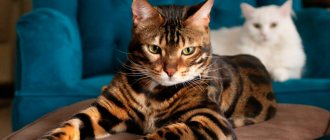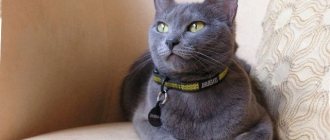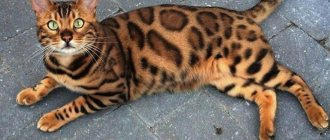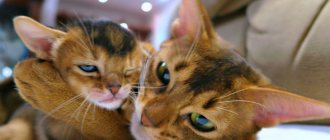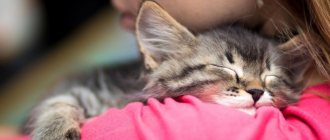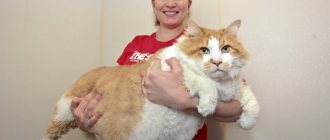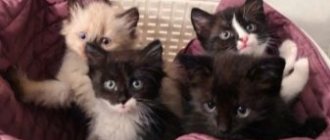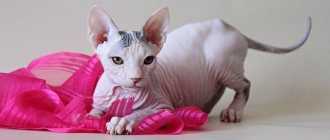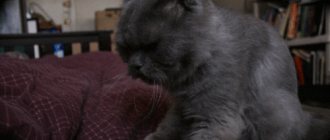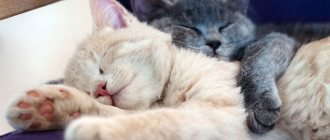There are currently about 600 million domestic cats living in the world. And less than one percent of them are considered purebred. Some varieties of cats are so unusual and unique that their cost can reach several hundred, thousand and tens of thousands of dollars.
First published: 07/06/2020
Photo: pixabay.com
Various breeds have appeared as a result of long breeding work or random genetic mutations. There are animal hybrids that emerged from crossing domestic cats with various species of wild cats. A breed acquires official status when it is registered and recognized by one of the felinological organizations.
The cost of a particular breed can be influenced by several factors:
- Rarity of representatives.
The rarer a breed is, the more valuable and expensive it is. - Class of purebred kittens.
Felinologists have defined three classes for purebred pets:
Pet
- a pet without breeding rights, with the lowest cost. - Breeding
- with the right to breed, its price increases significantly. - Show class
- meets all breed standards, intended for exhibition work. The most expensive.
Breed traits that are not found in most other cats.
Rating:
- Savannah
- Chausie
- Safari
- Khao-mani
- Toyger
- Bengal cat
- Peterbald
- American Curl
- Elf
- Serengeti
- Manx
- Russian blue
- Scottish fold
- British shorthair cat
- Maine Coon
- Persian
Egyptian Mau
An ancient cat breed that was highly revered in Ancient Egypt.
Today, the cost of kittens can reach $5,000.
The breed is short-haired, medium size. The color is spotted, and there are spots not only on the coat, but also on the skin. The color can be silver, bronze or smoky. 2 lines are required under the eyes and on the cheekbones, there should be an M-shaped pattern above the eyes, and a W-shaped pattern at the level of the ears. Almond-shaped eyes should have a green color; up to 1.5 years, a yellow tint is allowed.
The cat is active and sociable; loneliness is not for her. The breed is characterized by excellent vision, smell, hearing and high speed - up to 58 km/h. The cat is very clean and loves water.
What affects the cost?
The cost of a particular breed depends on many factors that are important to consider when choosing a kitten. What to look for:
- Rarity. The fewer individuals of a breed there are in the world, the more expensive it is. Today, according to this criterion, the most expensive cat is the Savannah breed. They rarely give birth to litters, and the kittens are difficult to care for.
- Class. All purebred animals are conventionally divided into three classes: pet, breed and show (amateur, intermediate and exhibition). The level of an animal depends on its pedigree, purity of the line and exterior. Most of the most expensive cats are show class, if the breed is included in the international standard.
- Pedigree. If the kittens’ parents have taken part in exhibitions and have awards and titles, then the litter costs significantly more. All professional breeders spend a long time selecting a partner for breeding in order to obtain the most successful offspring.
- Exterior. The cost of a cat directly depends on its appearance. In this case, the price is influenced by compliance with breed standards or, on the contrary, exotic appearance.
The cost of the breed often depends on fashion trends. As practice shows, this approach only leads to the destruction of breed characteristics and a significant decrease in the demand for certain cats, since uncontrolled breeding and inbreeding (inbreeding) begins.
Among the exclusive cats there are also outbred individuals that have become valuable and popular due to their qualities. For example, the cats Larry and Palmerston work as rat catchers at the residence of the British Prime Ministers, and the cat Pebbles is an employee of the University of Essex.
Safari
Cost - $4000-8000
This is one of the rarest breeds. Obtained by crossing the Georfua, a wild cat from South America, and a simple domestic cat. Outwardly, Safari looks exactly the same as her wild relatives. However, representatives of this breed have a calm and affectionate character. This is a kind and sweet creature, devoid of aggressiveness. She loves to cuddle with her owner and play with him. At the same time, she has a lot of energy that she tries to throw out. The Safari cat is quite smart. Those who want to buy it should know that they will have to shell out a considerable amount - from 4 to 8 thousand dollars.
Bengal cat
How's the water?
Despite their exotic and somewhat wild appearance, Bengal cats are wonderful pets. The history of this breed can be traced back to the 60s of the last century, when American Jane Mill, a specialist in the field of genetics, crossed a wild leopard cat with a domestic cat. The breed received official recognition in 1983. The Bengal is distinguished by its muscular build, thick silky fur with a deep shine and spotted color. This is the only breed of domestic cat that has markings in the form of a rosette - a kind of marking on the fur of wild animals that helps them camouflage.
Long, lean Bengal cats are incredibly impressive and confident. They are very smart, inquisitive and love action. The wild nature of Bengals is manifested in their ineradicable desire to hunt. Even aquarium fish can become victims of cats. Energetic and curious, they love to swing from chandeliers, play with light switches, splash around in the bathtub, have fun opening latches on doors - in general, get up to absolutely amazing antics. The energy of these animals should be directed in a peaceful direction, providing them with physical activity. But, in general, Bengal cats are quite social. They are attached to all household members, sociable, ready to tolerate being “squeezed”, and demonstrate a friendly attitude towards other pets and children.
You can become the owner of a Bengal cat by paying $2000-5000. The cost of kittens with a particularly rare color and outstanding pedigree reaches $20,000.
Bengal cat
No. 3. Khao-mani
Thai cat breed with a hundred-year-old pedigree. The animal was first mentioned in the Cat Book of Poems, compiled over several centuries (from 1350 to 1767). In ancient times, the Kao-Mani lived exclusively in the families of kings. They were believed to attract wealth, luck and longevity.
A distinctive feature of the breed is expressive eyes of different colors, smooth snow-white fur. Cats of this breed love to spend time with people, are active, and easily remember simple commands. They get along well with restless children. They do not tolerate loneliness well, therefore they are not suitable for those who will not pay enough attention to them.
The average cost of a purebred kitten is 10 thousand dollars.
Housey (chausie)
This breed is the result of crossing a wild jungle cat and an Abyssinian domestic cat, and regularly requires an influx of new wild blood.
The cost of kittens reaches $10,000.
The weight of a cat can reach 10 kg. The body is strong and muscular, the legs are long. Large ears are equipped with tassels (not always). The head is small, the chin is strong, the cheekbones are slightly angular. The eyes are almond-shaped and can be greenish or golden.
It is preferable to keep the Houseie in a spacious enclosure - the animal is active and needs a lot of space to move. The cat loves communication, but will not sit in your arms.
No. 6. American Curl
A short to medium coated breed discovered in the 1980s in California, USA. A distinctive feature is the ears turned back, resembling horns from a distance.
Interesting! The ears of newborn kittens are straight, but from the second day they begin to curl quickly.
The weight of an adult is 5 kg. The body is strong, slightly elongated. The hind legs are longer than the front legs.
The American Curl is a friendly breed of cat that quickly becomes attached to people. They love evening gatherings with their owners, are not averse to playing, and are very energetic. They never show aggression and have a balanced disposition. They will not bite or scratch unless there is a good reason. If necessary, use logic and show cunning.
The price of an American curl reaches 4 thousand dollars due to its rarity.
Elf
Cost - $1300-3000
This is a completely new and very unusual breed, which saw the light literally these days - in 2006. Despite its youth, this breed is valued all over the world and is very popular among cat lovers. Its name is probably explained by the fact that the cat's ears bend slightly forward. The eyes are big. And due to the complete absence of fur, she really looks very much like some kind of mythical creature. An Elf cat costs from 1 to 4 thousand dollars.
Toyger
These cats resemble toy tigers.
A kitten can cost $15,000.
The breed is short-haired. The main background is brown, with dark stripes on the back, chest, belly, paws and tail. The fur is plush, the presence of sideburns on the sides of the muzzle is appreciated. The eyes are small, the eyelids droop slightly. The ears are slightly rounded. Not all organizations have yet recognized the breed.
Scottish Fold (Scottish Fold)
A distinctive feature of the breed are small ears that are curved forward and downward. This consequence of a gene mutation is also a disadvantage, since the animal may have problems with the joints.
The cost of a Scottish Fold kitten can reach $3,000.
Scottish Folds are of medium size and have a strong and harmonious build. The coat is short, but very soft and thick. The eyes are large and round, set wide apart.
Scottish Folds are distinguished by their cheerful disposition and sociability, their character is balanced. Such cats become strongly attached to people and home. This breed is able to stand easily on its hind legs and has a raspy voice.
Persian cat
Persian cat
It is generally accepted that the ancestors of these imposing beauties were brought to the European continent from Persia (modern Iran), although there is historical evidence that the breed existed before our era. The ranks of fans of Persian cats are not thinning. People love them for their calm, easy-going character, intelligence, friendliness and, of course, for their unmatched appearance. Persians have luxurious long hair, a cute “Pekingese” face with expressive eyes, which, depending on the color of the animal, can be green, copper-orange or blue. Particularly delightful are white Persian cats with gentle pansies.
Persians love comfort and their owners, they are ready to be friends with other pets, even birds, because the breed has lost its hunting skills. Cats will not frantically rush around the room when they are in a playful mood, tear off furniture with their claws, or jump on high surfaces. They prefer to bask endlessly in their master's bed, which is why they are called sofa cats. However, these couch potatoes can be quite interested in balls, artificial mice and other toys. It is important to carefully and regularly care for the royal “fur coat” of the Persians, otherwise it will be spoiled by tangles. Prices for Persian cats start at $500 and can reach up to $5,000 if the chosen fluffy specimen is the offspring of champion parents.
Persian cat
Serengeti
The breed is a hybrid. The basis was Bengal cats; Abyssinian, Oriental, European cats and Maine Coon were also used.
The cost of Serengeti kittens can reach $2000.
The breed is large, weight can reach 15 kg (in cats - up to 10 kg). The Serengeti has the longest legs and a long and muscular body. The color is spotted, with ring stripes on the tail. The ears are large, as long as the muzzle or slightly less. The eyes are large and round, set close together, always rich in color and in harmony with the color.
The Serengeti is characterized by activity, curiosity and a love of outdoor games. The cat does not tolerate loneliness and lack of attention well; it may not get along with other pets.
